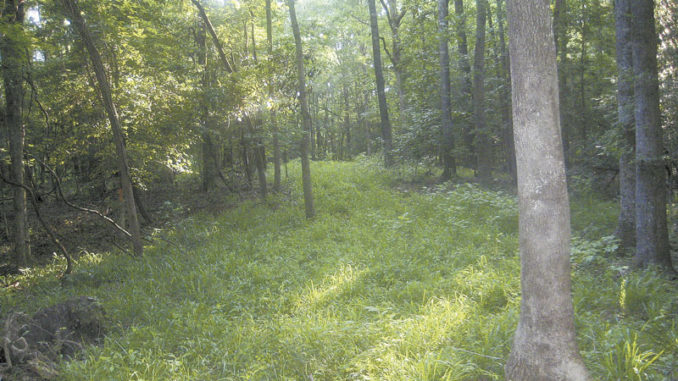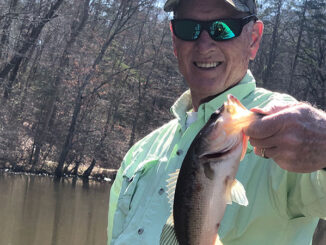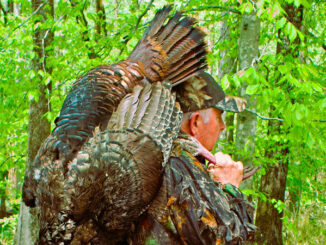
Protected areas can be used as food plots
Deer and other wildlife live in a wide variety of natural communities. And this includes forested and non-forested venues. Deer utilize habitats they are accustomed to, whether it’s a hardwood bottomland, swamp, cutover, pine plantation, open meadow or agriculture centered.
These animals utilize various habitats for all parts of their life history, including feeding, bedding and reproducing. But deer remain protective and avoid human interactions as much as possible. Food plots located within the protection of the woodlands can be a sure-fire way to entice deer and other wildlife to feed in the daylight.
Food plots built within the understory of large, towering trees are referred to as canopy plots. Deer will feed throughout the day and night, but daylight feeding will generally be in places where cover and safety are apparent. Canopy plots provide a perfect place to encourage feeding behavior during legal shooting light.
Canopy plots cannot be created everywhere, however. Creating these food centers requires the right combination of mature trees and light understory.
Canopy problems for food plots
Hunters creating canopy plots often face stumbling blocks. For one, mature trees utilize a large amount of the critical resources that will immediately rob from potential food plots down below. Large, mature trees have large crowns that hog a massive quantity of sunlight. They allow only minimal sunlight penetration to the soil surface. Sunlight is not only important, plants require it for photosynthesis and the creation of plant energy. Additionally, mature trees utilize every available nutrient from the soil to fuel maintenance and growth functions.
To make the process more difficult, the large root systems of mature trees extend well beyond their trunks. In most cases, the root systems extend laterally to the tips of the branches, out all four sides. And they excrete acids into the soil to inhibit the growth of other competing vegetation.
Trying to grow a forage crop under the canopy of mature trees has its challenges. But the canopy can also have a positive influence on growing plots on certain sites. Limited sunlight penetration can be beneficial on dryer sites by preventing excessive moisture loss. That’s especially true during the middle of the day when full sunlight beams down to the soil’s surface. Young plots need sunlight to create energy. But the tender sprouts and leaves are delicate. Full sunlight on hot and dry days can stress these plants to their fatal end.
Some food-plot varieties prefer partial sun as opposed to full sun. These plots are typically referred to as shade-tolerant varieties. The most common shade-tolerant planting is Durana white clover, which do well in partial sun and can perform well under the canopy.
No competition
Canopy food plots can live in both hardwood and pine forests with partial sun penetrating to the forest floor. The most-suitable areas are already enrolled in a routine burning schedule. So understory vegetation is minimal. However, these areas can be mowed and sprayed to kill future, competing vegetation.
In order not to impact canopy trees, only foliar-acting herbicides should be used. A full spectrum herbicide like glyphosate can be used to prepare the site for planting.
For the best results, crown closure should be less than 75%. Anything higher will prevent food plots from flourishing.
Landowners can also create canopy plots by thinning forest stands to reduce crown closure for the purposes of creating a more open canopy. The best type of cut to create the opportunity for canopy plots is a shelterwood cut. A light canopy remains, but enough forested area also remains, providing security cover and partial crown coverage.
Plots located in forested areas should be lightly disked, only churning up the top 3 inches of soil. Anything deeper will damage the root systems of nurse trees. Small-seeded food-plot varieties will be used. So creating a seed bed only requires shallow disking.
Canopy plots are well suited to be planted in late summer and fall as cool-season food plots instead of spring and early summer as warm-season plantings.
Typically, land managers plant most cool-season food plots from late September and through October. But they can plant cool-season canopy plots a little earlier, since much of the planting area will be buffered from the harsh, summer sun. In fact, cool-season varieties may even grow better when planted in areas of partial sun a little early in the fall planting season.
Shade-tolerant selections
Shade-tolerant species should be selected as singular plants or as a food-plot mixture. Not all plants prefer full sunlight to survive and flourish. Certain varieties are more sustainable when grown in partial sun. They are often more-tender varieties that can be damaged from excessive heat exposure. Partial sun on these plots can be beneficial, allowing enough sun for photosynthesis but preventing damage from heat stress.
While some varieties of seed options can tolerant some level of shade, variations of clover are the best options for canopy plots. Crimson, white Durana and subterranean clovers are well-suited for sites where shade tolerance is critical.
Some select cereal grains can also be successfully grown in areas of partial sun. Winter rye is the best candidate as a cereal grain, but forage oats can also flourish with average success under a forested canopy with limited sunlight.
Mixtures of clovers and cereal grains can also be used in shaded areas. The mix can be variable, but a good recommendation per acre is 40 pounds of rye and 15 pounds of clover.
Since these selected seeds are relatively small, only light disking is necessary to get the seeds set in the soil for germination. These seeds can even be top-sewn or lightly raked in order to encourage germination.





Be the first to comment